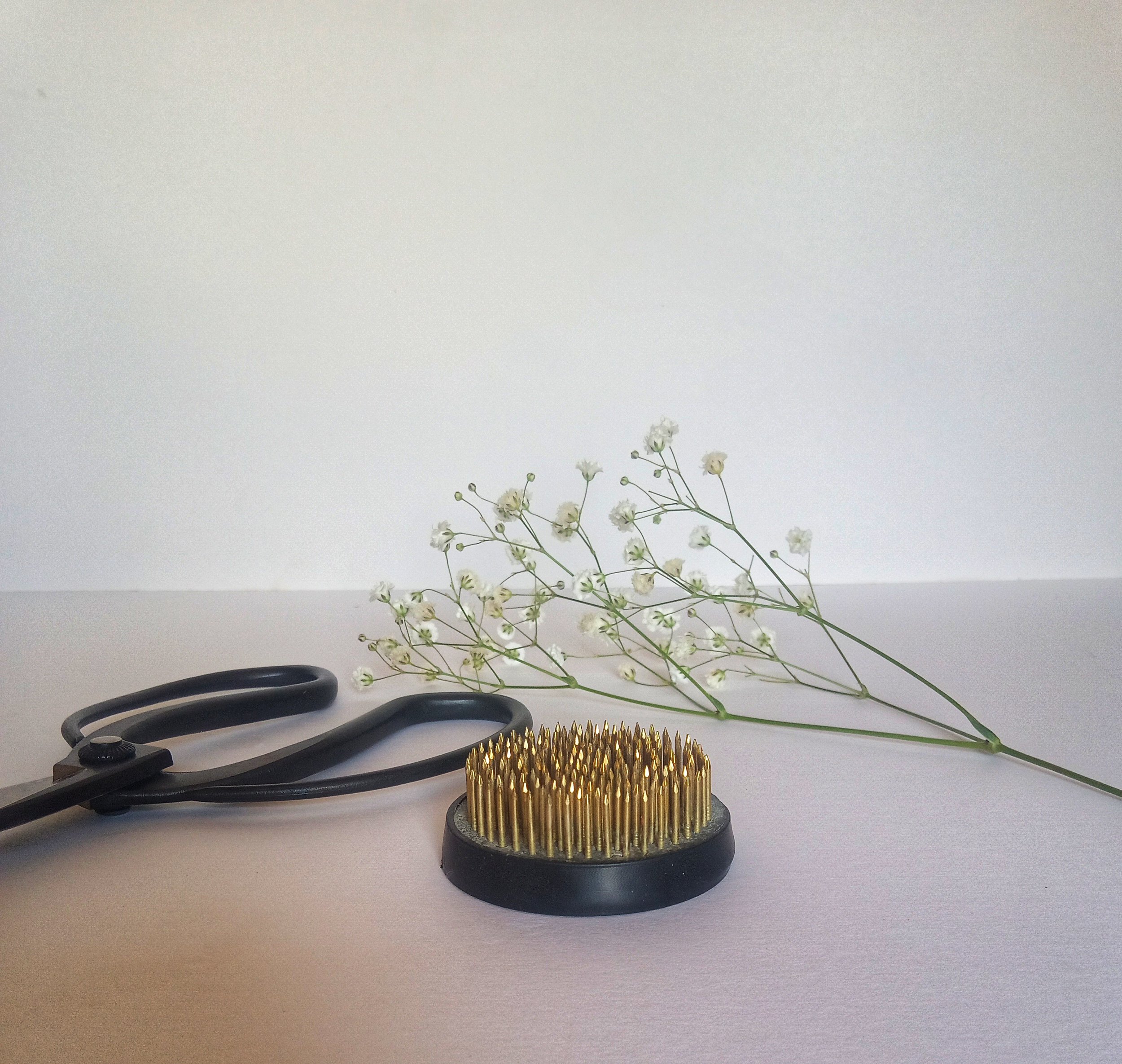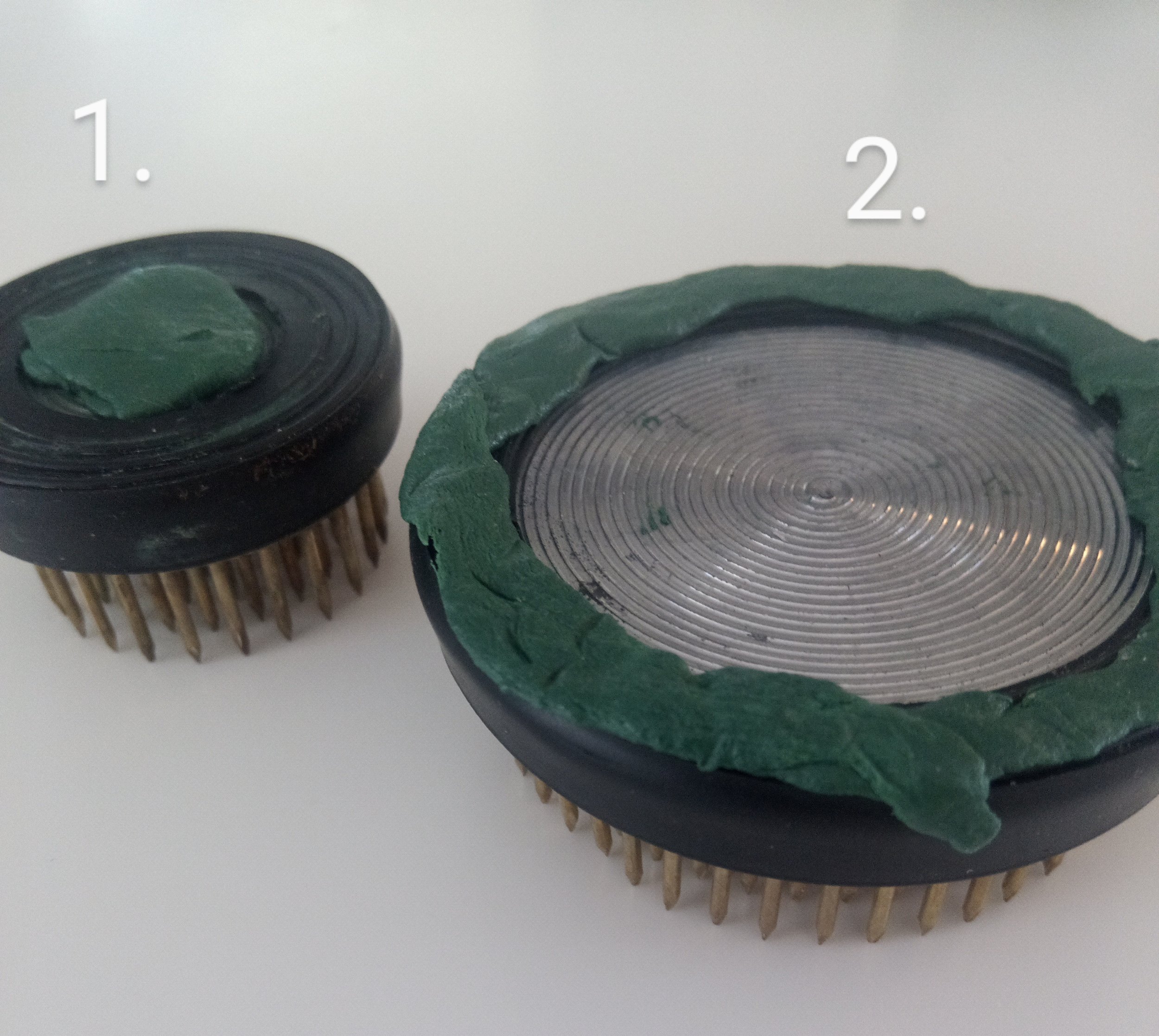Kenzans
A kenzan - also known as a flower frog or pin holder
Kenzans were traditionally used in Ikebana, the Japanese art of flower arranging. The word Kenzan means ‘sword mountain’. Kenzans were also used in floral designs before the invention of floral foam. They come in different shapes and sizes and are a sustainable alternative to using floral foam.
I use Kenzans a lot in my designs, sometimes without any other mechanics. For larger designs, I use Kenzans with chicken wire. Both can be reused time and time again.
Chicken wire and a kenzan
Before adding water to the vessel, attach some floral fix (also called floral tack/putty/clay) to the bottom of the kenzan – this will hold it firmly in position. Make sure that the vessel is completely dry or the floral fix will not stick. When attaching, press and twist the kenzan to secure it to the bottom of the vessel.
The floral fix can be fixed 1. in the middle of the kenzan or 2. around the rim (as you can see mine are well used!)
Although it is always best to cut flower stems on a 45-degree angle, to increase the surface area so that the flowers can absorb water more easily, when using kenzans I cut the stem straight across so that the stem goes in to the kenzan more easily. Take care when using kenzans as the pins are sharp.
Kenzan in a small bowl with a few stems of gypsophila
You can use kenzans to display a few blooms in a bowl (as used above when I had some leftover gypsophila from making a flower crown) or for larger arrangements. If only using a few stems, the kenzan may be visible. If this is the case, you can cover the kenzan with some moss. In larger arrangements it will not be seen due to the abundance of flowers.
When cleaning the Kenzan, make sure you remove any of the foliage left between the pins (you can use a kenzan ‘straightener’ for this). I twist the kenzan to remove it from the bowl and then remove the floral fix. You can reuse your kenzan time and time again, making it a cost effective and sustainable option for creating beautiful floral designs!



